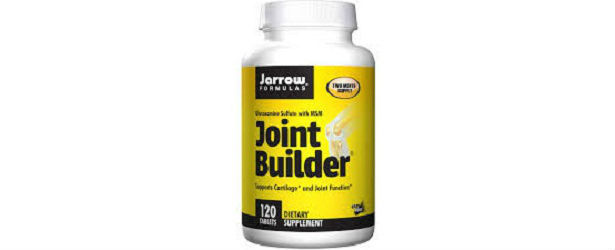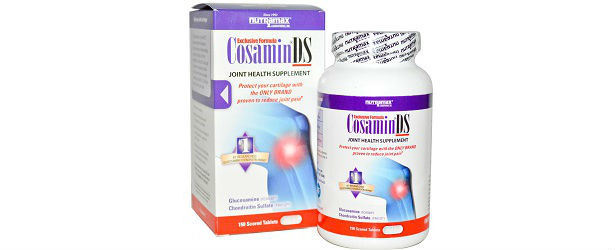
Treat Joint Problems by Swimming
Many people have had fun swimming with friends and family. It is a very relaxing activity, and you cannot deny the fact that swimming is something that takes away stress, even if just for a short time. But not everyone knows that swimming benefits the body, too. People in some countries with very cold weather dip in a warm pool or spring to help them balance or increase their body temperature and to fight the freezing weather.
 In the field of medicine, a warm bath or swimming in a warm pool is considered beneficial, especially for the elderly and those who suffer from muscle and joint pain.
In the field of medicine, a warm bath or swimming in a warm pool is considered beneficial, especially for the elderly and those who suffer from muscle and joint pain.
The warm water helps reduce the pain in the joint as well as its inflammation, the usual cause of pain. Swimming is also used in medicine for physical and/or rehabilitation therapy.
Swimming increases the muscles’ endurance and strength, while improving the range of motion of the joints.
When the joint condition is already present, swimming reduces joint damage due to injury or joint problems.
Swimming Therapy for Joint Problems
When using a warm bath treatment, doing a specific stroke is not necessary. What matters most is that the body part affected by the joint pain or damage soaks in the water to increase its blood flow. This relaxes the tension in the muscles and reduces inflammation to the joint area. Doing some simple movements like walking or even just stretching while dipping in the warm water is good enough to promote healing, especially in the common parts where joint pain can concentrate like the hip, knee, and ankle.
Swimming Exercises for Joint Pain
 A typically good example of an exercise is where the head remains on the surface of the warm water while everything else is submerged, moving the arms and the wrist in a circular and crossing motion. This improves the joint conditions in the upper body parts, especially the hands and arms. Walking around the warm pool will then improve the joint condition of the hip joints, legs, and feet.
A typically good example of an exercise is where the head remains on the surface of the warm water while everything else is submerged, moving the arms and the wrist in a circular and crossing motion. This improves the joint conditions in the upper body parts, especially the hands and arms. Walking around the warm pool will then improve the joint condition of the hip joints, legs, and feet.
Those who suffer from joint damage can experience uncomfortable symptoms like joint pain, joint stiffening, or hardening. This hinders patients from normal movement, not to mention doing simple and basic exercises.
However, doing the exercises in the water reduces the gravity and the weight of patients making it easier for them to move, while simultaneously, the high water temperature reduces the inflammation and pain in the joint and muscles.
Basic swimming strokes recommended by most physical therapists and specialists that promote healing of the joint damage and reduce the symptoms of joint conditions include the following:
The dog-paddle stroke strengthens the arms and legs. This swimming style requires swimmers to kick to move forward, while paddling the hands and arms under the water to keep afloat.
In contrast, the crawl, another swimming style similar to the doggie paddle, keeps swimmers afloat by paddling only the hands under the water to make forward movement as well.
 Patients must be careful though because there are some swimming styles or strokes that can damage or harm joints, especially if not done properly. For instance, the breast stroke is a very stressful swimming style that can bring intense pressure to the joint area and muscles in the body parts involved in doing it, especially for those not used to swimming. Going for a warm soak or swim can be really helpful for those trying to reduce the symptoms of joint conditions or for those suffering from joint damage caused by injuries. But it is always best to get advise and consult with a medical expert or specialist before doing any exercises, whether or not it involves swimming. Experts can also inform patients about certain details concerning safety as well as all other relevant information about swimming exercises, such as the pros and cons.
Patients must be careful though because there are some swimming styles or strokes that can damage or harm joints, especially if not done properly. For instance, the breast stroke is a very stressful swimming style that can bring intense pressure to the joint area and muscles in the body parts involved in doing it, especially for those not used to swimming. Going for a warm soak or swim can be really helpful for those trying to reduce the symptoms of joint conditions or for those suffering from joint damage caused by injuries. But it is always best to get advise and consult with a medical expert or specialist before doing any exercises, whether or not it involves swimming. Experts can also inform patients about certain details concerning safety as well as all other relevant information about swimming exercises, such as the pros and cons.
TOP 5
JOINTTreatments |
|||||
| Jointlax | Joint Advance | Exomine | Carlson Nutra-Support Joint | Himalya JointCare | |
|---|---|---|---|---|---|
| 1 | 2 | 3 | 4 | 5 | |
| Price (1 bottle) Price (6 bottles)best value |
$49.95 $139.0 |
$39.95 $239.70 |
$59.95 $239.70 |
$56.50 $339.00 |
$29.95 $179.70 |
| Overall Rating | 99.50% | 91% | 78.30% | 72.00% | 69% |
| Performance* |





|





|





|





|





|
| Speed of Results* | Extremely Fast | Good | Average | Average | Slow |
| Quality of Ingredients | Premium | Good | Good | Average | Unknown |
| Customer Satisfaction Evaluation | 99.20% | 87% | 76.20% | 72% | 66.30% |
| Safety Evaluation | Safe for Use | Safe for Use | Safe for Use | Safe for Use | Safe for Use |
| Customer Service Rating |





|





|





|





|





|
| Reorder Rate | Highest | Good | Good | Average | Average |
| Return Policy | Risk Free | Unopened | Unopened | Risk Free | No |
| Success Rate | 99.40% | 82.50% | 74% | 71.20% | 62% |

 Subscribe Now
Subscribe Now











